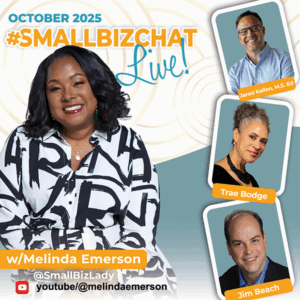Meeting new people used to scare me. Whether it was at a social gathering or a work event, I’d feel my heart race, my palms sweat, and I’d constantly worry about what others thought of me. I’d overthink everything—how I was standing, what I was saying, even where to put my hands. It made social situations exhausting and overwhelming.
But then, I discovered something that completely changed the way I approach meeting new people: body language. It turns out that how you carry yourself can do more than just make a good impression—it can actually help you feel more confident and at ease.
Once I learned a few simple body language tricks, meeting new people became a lot less terrifying and even kind of fun. If you’ve ever felt the same way, I’m going to share with you the five tricks that worked for me and can help you too.
Let’s get started.
1. Make Eye Contact (But Don’t Stare)
One of the easiest ways to connect with someone is through eye contact. I used to avoid it because I was nervous, but I learned that meeting someone’s gaze, even briefly, makes you appear more approachable and confident. It shows you’re engaged and interested in the person you’re talking to.
But here’s the key: don’t overdo it. Too much eye contact can feel intense or uncomfortable, so aim for a balance. Make eye contact for a few seconds, then look away naturally before re-engaging. It creates a comfortable rhythm and keeps the conversation flowing.
Practical Tip: Practice making eye contact in casual settings first, like when you’re talking to a cashier or a colleague. Start small and build up your comfort level so it feels more natural in bigger social situations.
2. Smile Genuinely
A simple smile can go a long way in making a good first impression. When I was nervous about meeting new people, I’d often forget to smile, which made me seem distant or uninterested.
But when I started smiling more, everything changed. A genuine smile makes you look warm, friendly, and approachable—and it can help put both you and the other person at ease.
The key is to keep it natural. A forced or fake smile can come across as insincere, so smile when you feel comfortable and let it happen naturally. You don’t need to grin the whole time, just let your face relax and show some warmth when you greet someone or when something in the conversation feels positive.
Practical Tip: If you’re feeling nervous, take a deep breath before meeting someone and remind yourself to smile as you approach. You’ll instantly come across as more open, and it’ll help calm your nerves too.
3. Stand (or Sit) Tall
How you carry yourself says a lot about your confidence, even if you’re not feeling confident on the inside. I used to hunch my shoulders or cross my arms when I felt nervous, which only made me appear closed off or uncomfortable. But once I started paying attention to my posture, everything shifted.
Standing (or sitting) tall with your shoulders back and your head held high sends a message of confidence and openness. It not only makes you look more self-assured, but it also affects how you feel—better posture can actually trick your brain into feeling more in control and confident.
Practical Tip: Before walking into a social situation, check your posture. Stand up straight, roll your shoulders back, and take a deep breath. Not only will it help you feel more grounded, but it’ll also project a positive and confident energy to others.
4. Use Open Body Language
I didn’t realize how much my body language was shutting people out until I learned about the importance of being open. Crossing your arms, turning away slightly, or even fidgeting can signal that you’re uncomfortable or uninterested, even if that’s not how you feel inside.
Open body language is all about being relaxed and approachable. Keep your arms uncrossed, face the person you’re talking to, and use natural gestures to show you’re engaged. This helps create a more inviting atmosphere and encourages others to feel comfortable around you.
Practical Tip: Next time you’re in a social setting, be mindful of where your arms and hands are. If you find yourself crossing them or fidgeting, take a deep breath and consciously relax your posture. You’ll come across as much more approachable, and you might even feel more at ease.
5. Mirror the Other Person’s Movement
Mirroring, or subtly copying the body language of the person you’re talking to, is a great way to build rapport. It’s something we naturally do when we’re comfortable with someone, and it helps create a sense of connection without needing to say much. I started using this technique and noticed how it made conversations feel more natural and less intimidating.
Mirroring can be as simple as matching their posture, gestures, or the pace of their movements. The key is to keep it subtle and natural—don’t copy every move exactly, or it’ll feel forced. Instead, gently align yourself with the other person’s body language, and you’ll find the interaction flows more smoothly.
Practical Tip: During your next conversation, try mirroring the other person’s posture or gestures. If they lean in, lean in slightly. If they use hand gestures, try using them too. It helps build a connection and makes the conversation feel more comfortable.
Conclusion
Meeting new people can feel intimidating, but it doesn’t have to be. By making small adjustments to your body language—like maintaining eye contact, smiling, standing tall, using open gestures, and mirroring the other person—you can not only appear more confident but actually feel more confident too. These simple tricks helped me overcome my fear of social situations, and they can do the same for you.
It’s not about trying to be someone you’re not, but about presenting the best version of yourself. When you feel more comfortable in your own skin, it naturally makes others feel comfortable around you too.
The way you carry yourself often speaks louder than words—and the more you practice, the more effortless it becomes.









